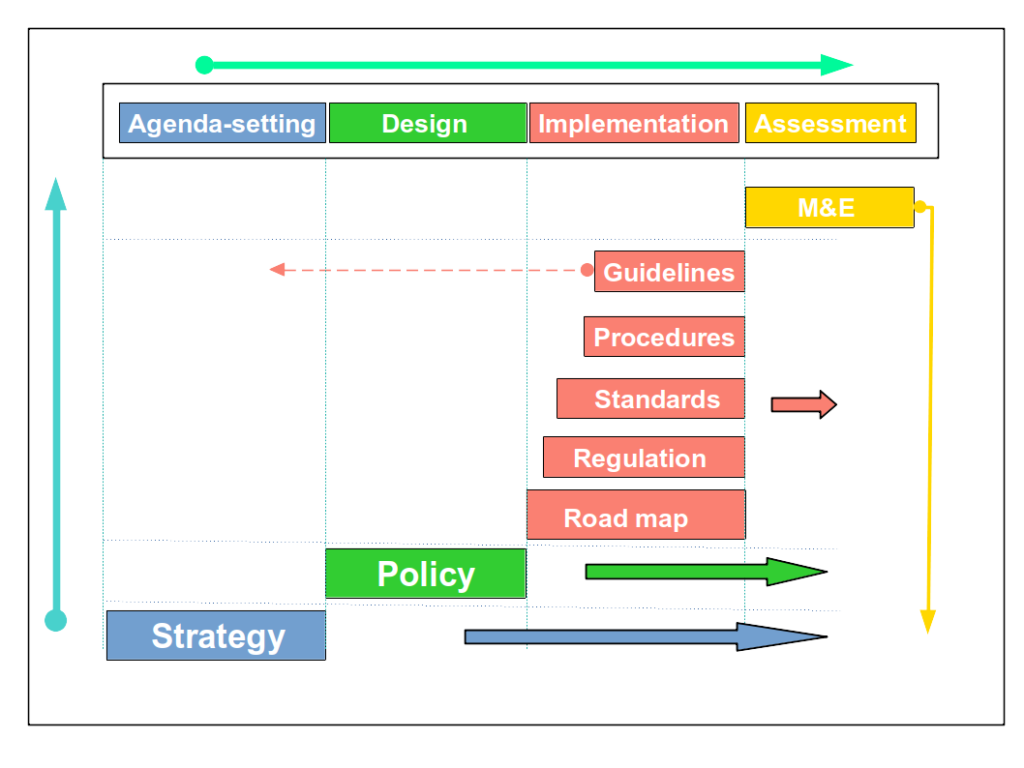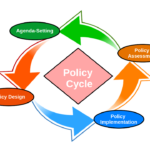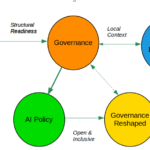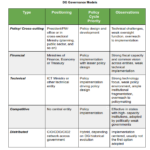The various policy instruments mentioned in the previous post play a critical role in the policy development process. However, providing a succinct description of each is first required. That will ensure policymakers and stakeholders are on the same page when they jointly tackle the various phases of the policy cycle. Bear in mind that I am limiting my analysis of the development of digital policies. Broader policies can certainly be much more complex and must probably deploy additional tools such as taxation, grants, subsidies, new services, budget allocations, etc.
Table 1 below presents such a description.
Two critical points emerge from the table’s content. First, the specific functionality of every policy tool is clearly defined. For example, while policy and regulation are closely related, each has a different function in the policy process. They are not synonymous, as it is commonly assumed. In fact, policy sets the overall scope for subsequent regulation. But not all regulation requires a policy, more so in the digital domain where continuous and rapid innovation often introduces new challenges – the latest example being autonomous vehicles. Sequencing the policy tools in time is also required, more so when policy implementation is in its planning stages. Undoubtedly, starting at the bottom of the table is not an option that should be even considered.
Table 1: Policy Tools Description
The second critical point is related to governance. An adequate and effective public policy space where policy development should occur should be in place. Government must ensure that a public institutional instance is created or identified to carry out the policy work in an official capacity. Such an institutional instance must be structured under the area’s specific requirements or sector impacted by the policy development process. And in principle, it should be open, inclusive and entice the involvement of key stakeholders in the process, from agenda-setting to policy assessment.
Moreover, such instance must have access to knowledge and expertise that brings together technology, technology management, public sector dynamics and economic development. Limiting the functionally of the institutional instance to just technology, for example, can yield subpar and biased national policies that other countries can easily outshine. The governance of such an instance should also ensure that ownership of the policy spreads across all actors involved in the process and participation is open to all.
Now, positioning the various tools within the overall public policy cycle is critical to fully grasp the much-needed coherence to the overall policy development process. Indeed, each policy tool has a specific function within the overall policy cycle, and deployment by policymakers should be accomplished accordingly. Do not forget that the policy cycle is dynamic and constantly moving in time. Putting it in motion reveals the overall policy tower policymakers should master upon entering the complex territories of policymaking. Figure 2 depicts such a tower.
Figure 2: The Policy Tower
 The tower foundation and main floor are occupied by the strategic vision setting the policy agenda and the design, development and completion of the policy itself. A series of floors rise on top, with road maps and regulations being the first tenants. The top floor is fully occupied by the monitoring and evaluation of the policy process. It has an elevator that goes directly to the tower’s foundation to report on potential structural changes resulting from the evaluation process. Once this is completed, the dynamic process starts once again.
The tower foundation and main floor are occupied by the strategic vision setting the policy agenda and the design, development and completion of the policy itself. A series of floors rise on top, with road maps and regulations being the first tenants. The top floor is fully occupied by the monitoring and evaluation of the policy process. It has an elevator that goes directly to the tower’s foundation to report on potential structural changes resulting from the evaluation process. Once this is completed, the dynamic process starts once again.
In practice, policy development might move along specific paths in response to local contexts and political circumstances. For starters, most countries, developing and industrialized, do not separate policy design from strategy development. The foundation is thus just one single floor as the agenda-setting and policy development steps are still undertaken sequentially but as part of one single process. Here, strategy documents targetting particular digital domains (digital government, AI, blockchains, cybersecurity, and so on) are completed after extensive analysis, broad consultations and comprehensive synthesis. They are then submitted to the Cabinet of Ministers or similar highest level of government for official approval. Publication in the Official Gazette or similar follows, thereby becoming government policy.
The advantages of such an approach stem from the fact that the priority areas identified in the agenda-setting phase can also be open to broad consultation and engagement, including e-participation processes. While this process might be more time-consuming, it can significantly reduce the potential gap between the demand side represented by stakeholders and beneficiaries and the government-led supply side – more so when public goods are at stake.
At any rate, what happens next after official policy approval seems to be the most critical challenge. Policy approval is not the end of the process. Road maps, regulations, standards and procedures must now be developed and completed, especially if compliance with the policy priorities is expected. Unfortunately, in many geographies, deploying the policy tools available under the implementation phase of the policy cycle does not occur effectively, if at all. Instead, the approved multi-year strategy/policy is expected to carry the day and somehow deliver the goods by the end of its life cycle.
The policy tower should be a good place to inhabit while working in digital policy development – rent-free too.
Cheers, Raúl






